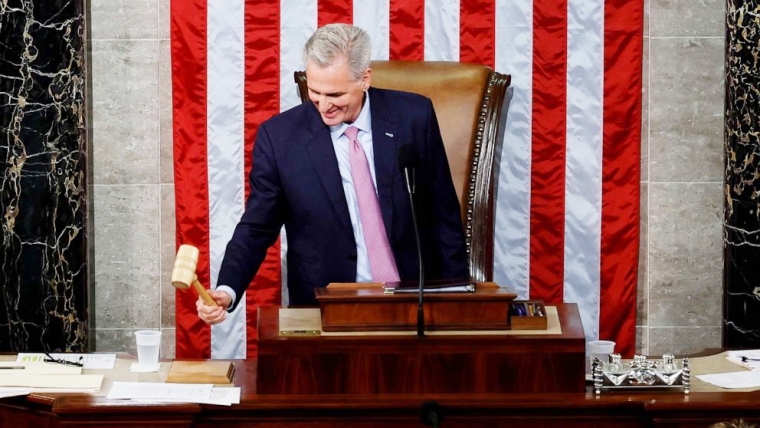
By Stuart Talman, XE currency strategist

Pessimism abounds through the final trading day of the month as global growth concerns persist amidst a sustained run of poor macroeconomic data out of China and sticky inflation that requires additional tightening from the Fed and other major central banks.
Risk assets are on the back-foot as a fragile, narrow US equity market rally that has been fuelled by a half dozen megacap stocks shows signs of exhaustion. The S&P500 has slid back below the technically important 4200 level whilst the Nasdaq’s 4-day 7%+ trough to peak rally has ended, suggesting that the AI lead frenzy is faltering as market participants acknowledge the Fed will hike again at either the 14 June or 26 July FOMC meetings.
Commodity currencies continue to struggle as another day delivers notable losses for energy and metals markets. The New Zealand dollar has traded sub-0.60 for the first time since 11 November having logged intraday lows in 6 of the past 7 trading days.
NZDUSD price action had been contained in tight ranges through the first two days of the week but broke decisively to the downside through yesterday’s local session.
The catalyst – weak manufacturing and non-manufacturing PMIs for China.
Attempting to recover through 0.6050 during the Asian morning, the Kiwi plunged into the low 0.60’s immediately following the soft PMI data. The National Bureau of Statistics (NBS) Manufacturing PMI fell further into contractionary territory, declining from 49.4 in March to 48.8 in April (vs 49.4 expected). Marking a 5-month low, factory activity continues to struggle amidst both weak domestic and global demand.
The NBS’s non-manufacturing PMI reports on activity from the services and construction industries.
Like other economies across the globe, China’s services sector remains in expansionary territory (50.0+ reading) but grew at a slower pace, falling from a 56.4 reading the month prior to 54.5 in April.
China’s post-pandemic recovery has been led by household spending on services such as travel and eating out, however the expected rebound in manufacturing has not inspired confidence. The recent run of soft macroeconomic data has added weight to the case for Chinese authorities to take action to stimulate the economy by cutting interest rates and lowering the reserve ratio for banks.
The yuan continues to weaken, USDCNY extending higher beyond the psychologically important 7.00 mark, reaching its highest level since late November.
A weaker yuan is a headwind for the China sensitive New Zealand and Australian dollars, particularly the latte…..the AUD was expected to benefit from increased demand for iron ore and other resources. This has not materialised as China’s faltering property market and rising debt levels erodes confidence in both the business and household sectors of the economy.

The Kiwi’s losses extended through European trade and into the New York morning, marking an overnight low at 0.598 as the run of strong labour market data continued.
The number of job vacancies in the US, as reported by the JOLTS survey unexpectedly increased. The April reading of 10.1 million represented a rebound from the previous months near two-year low of 9.745 million, indicative of a persistently tight labour market, which could potentially pave the way for additional Fed rate hikes.
Fed funds interest rate futures now assign a near 70% probability of the policy rate being lifted by 25bps to 5.25% - 5.50% in just over a fortnight.
Provided we don’t receive a weak US jobs report on Friday evening, the USD is likely to remain supported in the run-up to the 14 June FOMC meeting.
It’s a busy 24hours ahead with multiple offshore market moving events on the docket.
Eurozone CPI will be released this evening following yesterday’s national readings which delivered downside surprises for Germany, France and Spain. Whilst inflation for the Italian economy did decline from the month prior, it exceeded the consensus estimate.
This is encouraging news for the ECB, setting up for a likely soft eurozone reading. Core inflation is projected to ease from 5.6% to 5.5% having peaked at 5.7% in March. Headline inflation is expected to ease from 7% to 6.3% having peaked at 10.6% in October.
A downside miss would compel rates markets to dial back expectations of near-term ECB hikes, putting further downside pressure on the EUR. In this scenario the Kiwi will recover some of the past week’s precipitous slide, bouncing from near 0.56 to chart a course back to last week’s highs through 0.58.
In the US, weekly jobless claims, ADP Employment change and the ISM Manufacturing PMI all hold the potential to influence short-term direction. US factory activity is expected to fall further into contractionary territory.
The debt ceiling deal will be put to a vote within the next few hours. Mayhem will ensue should the bill fail to pass through the Republican controlled House. A successful passage sets-up a final vote in the Democrat controlled senate.
There is a sense of déjà vu – the USD continues to outperform, propelled higher by hawkish Fed expectations, US exceptionalism via strong data-flow and global growth concerns.
It feels like 2022 all over again.
The Kiwi to remain under pressure.
Daily exchange rates
Select chart tabs
Stuart Talman is Director of Sales at XE. You can contact him here.
2 Comments
I can’t help but think rate rises until it bursts, we will have to follow suit to save our dollar. Recent messaging from banks about “peak” rates, a simple lure?
yes I think they are trying to change the sentiment. We are steamrolling towards a recession and they are in a tight spot with no good answers. My guess they will not raise rates much, if any. In fact, I think they can’t.

We welcome your comments below. If you are not already registered, please register to comment.
Remember we welcome robust, respectful and insightful debate. We don't welcome abusive or defamatory comments and will de-register those repeatedly making such comments. Our current comment policy is here.